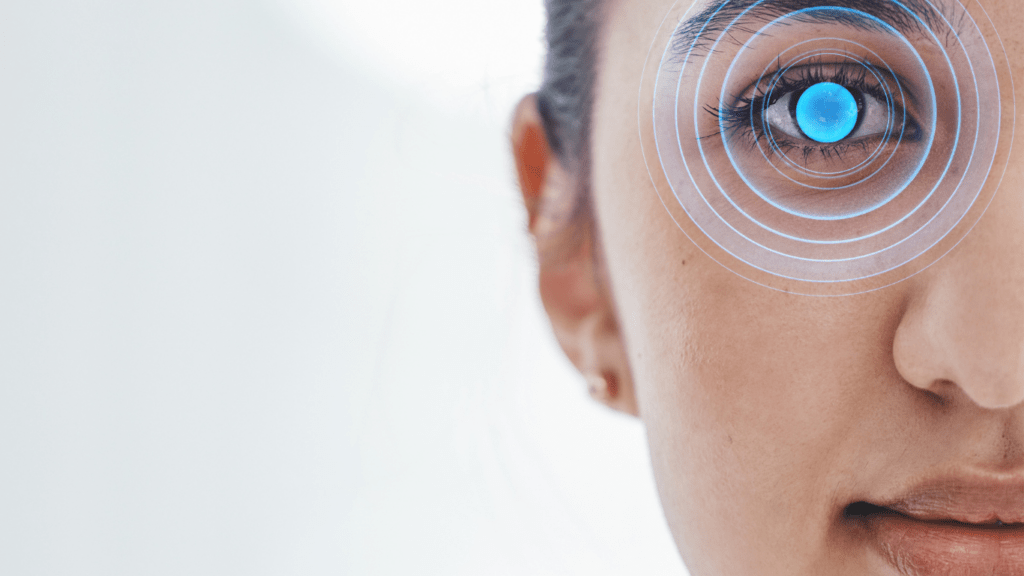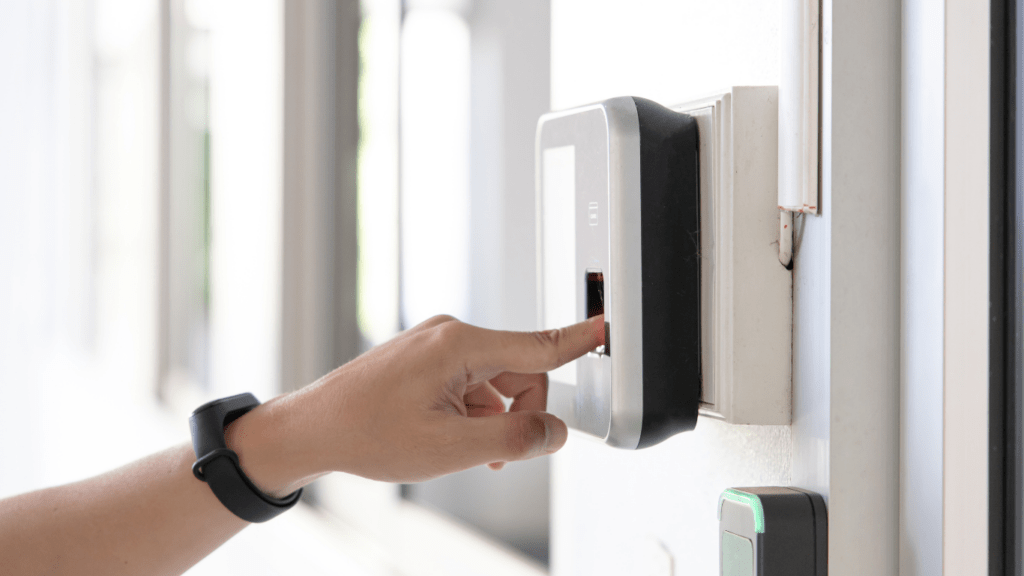The Beginnings of Biometric Technology
Early Methods and Technologies
Biometric technology’s roots trace back to ancient civilizations.
The earliest known method involves the use of fingerprints. In 1858, Sir William Herschel began using fingerprints for identification in India.
This method, though basic, laid the foundation for modern biometric systems.
Another early technology was Bertillonage. In the late 19th century, Alphonse Bertillon developed this system, which used physical measurements of body parts.
Bertillonage aimed to identify criminals and reduce fraud but required significant manual effort and had limitations.
In the mid-20th century, voice recognition emerged.
Bell Labs experimented with understanding and authenticating speakers’ unique vocal traits.
These early methods relied heavily on manual intervention and lacked automation, affecting their efficiency.
Key Milestones in Biometric Evolution
Several key milestones marked the evolution of biometrics, bringing it to its current state.
- 1960s – Automated Fingerprint Identification System (AFIS): Introduced in the 1960s, AFIS automated fingerprint matching. This innovation made fingerprint-based security practical on a larger scale.
- 1990s – Iris Recognition: In 1994, John Daugman developed an algorithm to recognize iris patterns. Iris recognition provided high accuracy and has since been used in various security applications.
- 2000s – Face Recognition: Integrated face recognition technology began gaining traction in the 2000s. Systems like FaceNet, developed by Google, significantly improved facial recognition accuracy, paving the way for widespread adoption.
- 2010s – Mobile Integration: The release of Apple’s iPhone 5s in 2013, featuring Touch ID, popularized fingerprint biometrics in consumer devices. Later, Face ID further established the role of biometrics in enhancing user experience.
Each milestone in biometric technology brings refined security and improved user experience, pushing the boundaries of what’s possible.
Current Trends in Biometric Technology
Facial Recognition Advancements

Facial recognition has become one of the fastest-evolving areas in biometric technology. Modern algorithms provide increased accuracy, even in varying lighting conditions.
Companies like Apple and Google have integrated advanced facial recognition into everyday devices, enhancing security and user convenience.
Researchers are also working on live facial recognition systems for real-time application, further broadening its use cases.
Fingerprint and Iris Scanning Innovations
Fingerprint and iris scanning continue to see significant advancements.
Sophisticated sensors now offer quicker and more reliable scans, even for partial or smudged fingerprints.
In 2013, the iPhone 5s popularized fingerprint scanning in consumer electronics, prompting widespread adoption.
Iris scanning has simultaneously gained traction due to its high accuracy.
Organizations are deploying dual biometric systems combining fingerprint and iris scans, ensuring multifactor authentication and heightened security.
Implications for Security
Enhancing Security Measures
Biometric technology has significantly enhanced security measures across various sectors. Compared to traditional passwords or PINs, biometrics provide a robust layer of protection.
For instance, biometric identifiers like fingerprints and iris patterns are unique to each individual, making unauthorized access extremely difficult.
Facial recognition systems have been integrated into security frameworks for surveillance and identity verification.
These systems can quickly identify individuals in crowds, enhancing public safety.
Utilizing AI algorithms, these systems offer real-time alerts when they detect known threats.
Financial institutions have adopted biometric authentication for secure transactions.
Banks use fingerprint and facial recognition to verify customer identity during online banking and at ATMs. These measures minimize fraud risks, ensuring secure financial services.
Challenges and Concerns
Despite the benefits, implementing biometric technology comes with challenges. Privacy concerns are a major issue when storing biometric data.
If breached, biometric data, unlike passwords, cannot be changed. Ensuring data encryption and secure storage solutions is critical to mitigate this risk.
Accuracy can also be a concern, particularly in diverse demographic applications. Variations in lighting, angle, and facial expressions can affect recognition rates.
Though AI advancements have improved accuracy, errors can still occur. Continuous updates and training of AI models are essential for maintaining system reliability.
Deploying biometric systems also raises ethical questions. Surveillance capabilities of facial recognition can lead to widespread monitoring, raising civil liberty concerns.
Clear regulations and policies are necessary to balance security benefits with individual privacy rights.
Biometrics in Everyday Use
Consumer Electronics
- Biometric technology improves security and convenience in consumer electronics.
- Smartphones and tablets often feature fingerprint scanners and facial recognition.
- Apple introduced Face ID in 2017, while many Android devices use similar tech. These systems ensure user-specific access, reducing unauthorized entry.
- Wearable devices like smartwatches also adopt biometrics. Devices monitor heart rate, sleep patterns, and physical activity using biometric sensors. This data enhances health tracking and user personalization.
- Laptops and computers use fingerprint and facial recognition for secure login.
- Windows Hello supports these features, creating a seamless user experience. Integrating biometric systems in consumer electronics enhances both security and usability.
Public and Private Sector Deployment
Biometrics play a crucial role in public and private sectors. In healthcare, hospitals use fingerprint and iris scans for patient identification, reducing medical errors.
Finance sectors employ biometric authentication for secure transactions, ensuring user identity verification.
Airports use facial recognition for passenger verification, speeding up boarding processes. Governments adopt biometrics in national ID systems for accurate citizen identification.
Law enforcement agencies use biometrics for criminal identification, aiding in solving cases efficiently.
Private sectors, including enterprise environments, deploy biometric systems for access control. Employees use fingerprint or facial recognition to enter secure areas, ensuring only authorized personnel gain access.
This improves overall security in corporate settings.
Biometric technology’s integration in various sectors enhances security while providing user convenience, signifying its crucial role in modern applications.
The Future of Biometric Technology
Predictions for Next-Generation Biometrics
Next-generation biometrics will focus on multimodal systems that integrate multiple biometric traits, such as facial recognition, fingerprint scanning, and voice authentication.
This approach enhances accuracy and security by combining different identification methods. For example, smartphones might use both facial and fingerprint recognition to unlock devices.
These systems will reduce errors and potential vulnerabilities associated with single-mode biometrics by leveraging multiple authentication factors.
Wearable technology will increasingly incorporate biometric sensors, monitoring health metrics, and essential personal data.
Devices like smartwatches and fitness trackers already include features like heart rate and SpO2 monitoring.
Future iterations may add advanced capabilities such as continuous glucose monitoring and ECG analysis, providing comprehensive health data while ensuring secure access.
Behavioral biometrics, analyzing patterns in user behavior such as typing speed, gait, and navigation habits, will gain prominence.
These systems will offer additional security layers against identity theft and fraud by identifying unique behavioral traits.
For instance, financial institutions can use behavioral analytics to verify user identity during online transactions, reducing the risk of unauthorized access.
The Role of AI and Machine Learning
AI and machine learning (ML) are crucial for the future of biometric technology.
These technologies enable the development of more sophisticated and adaptive biometric systems.
- AI algorithms can process and analyze vast datasets at high speed, improving the accuracy and reliability of biometric recognition systems.
For instance, advancements in deep learning algorithms enhance facial recognition accuracy, even in challenging conditions like low light or partial occlusion.
- Machine learning models continuously improve through training with new data, allowing biometric systems to adapt to evolving threats.
- Cybersecurity applications benefit significantly from this adaptability since systems can detect and counter emerging threats more effectively.
AI also enhances anti-spoofing techniques, identifying and rejecting fake biometric inputs like photos or masks, thus bolstering security.
- Explainable AI (XAI) will become essential for ensuring transparency and trust in biometric systems. XAI provides insights into decision-making processes, helping users understand how biometric conclusions are reached.
For example, XAI can elucidate why a facial recognition system flagged a particular image for re-evaluation, promoting accountability and user confidence in biometric applications.
Combining AI and biometric data will pave the way for personalized user experiences.
Customized security measures tailored to individual behaviors and preferences will become common.
For example, AI can analyze user habits and adjust security settings dynamically, offering a seamless yet secure interaction with devices and platforms.

